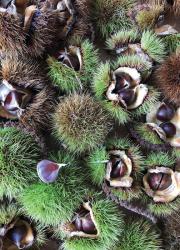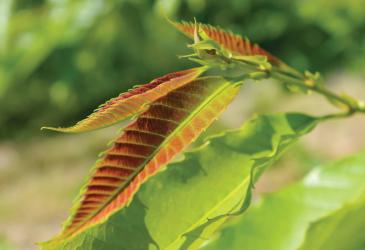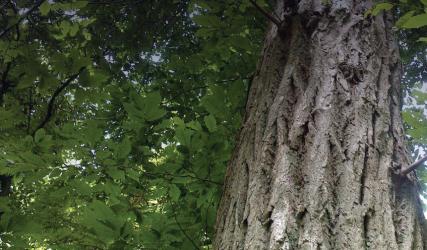AMERICAN CHESTNUT: Castanea dentata(Critically endangered)
Where to find it: Entry landscape at the Jack C. Taylor Visitor Center (currently under construction)
The American chestnut was once a major component of the forest ecosystem of eastern North America. It is now almost extinct in the wild, devastated by chestnut blight, a fungal disease introduced from East Asia. Chestnut trees were highly valued for their strong and rot-resistant timber and their edible nuts. The American Chestnut Foundation is working to breed a blight resistant American chestnut and reintroduce this tree to its original habitat. They are using a technique called backcrossing, which involves cross-breeding the American chestnut with the blight-resistant Chinese chestnut. One group of highly backcrossed blight-resistant chestnuts is called hybrid 15/16 B3F3, which is 15/16 (94%) Castanea dentata and 1/16 (6%) Castanea mollissima. This hybrid is currently in the testing phase, and TCF donated a few of these nuts to Missouri Botanical Garden for testing and for educating the public about the American chestnut. They are currently growing in the Garden's Oertli Family Hardy Plant Nursery and will be planted in the new visitor center landscape.









